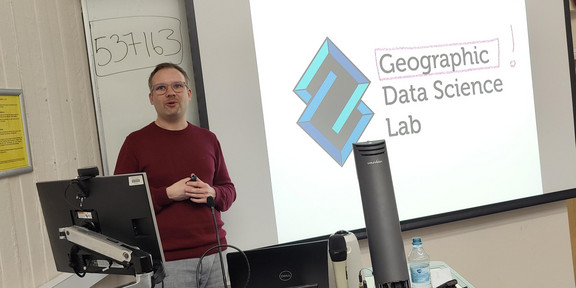Invited talk at University of Liverpool

Statistical spatial analysis is one of the established traditions in GIScience and geoinformatics. Currently, there is some paradigm shift in spatial analysis towards spatial or geographic data science, but the underlying way we operationalise space is still mainly rooted in the geometric domain. We still use points, lines, polygons, and field representations to formalise space in our analyses. However, since the schism between the so-called spatial scientists and other streams of human geographers from the late 1950s, a number of space conceptualisations have emerged that are very different from a geometric perspective. These conceptions focus more on spatiality than on space (i.e., on being-in-space), but do not lend themselves easily to formalisation. In his presentation at the Geographic Data Science Lab (University of Liverpool), René Westerholt talked about challenges for spatial-statistical analysis that arise when taking these other, human-geographical conceptions of space seriously and when wanting to use them in formal analytical terms. After a brief introduction to selected human-geographical concepts of space, he put forward the thesis that in contemporary spatial science we are always-already operating in digitally infused spaces, either in a direct or indirect way. Digital geographies thus always have to be factored in. In addition to human-geographical notions of space, the talk also touched upon inference-related problems that arise when dealing with the simplified geometric footprints of more complex spaces, a topic that René Westerholt has studied intensively over the last decade, focusing on spatial autocorrelation estimators. The talk concluded with an outlook on how we might move from geometric operationalisations of space to a more-than-geometric form of spatial analysis.

